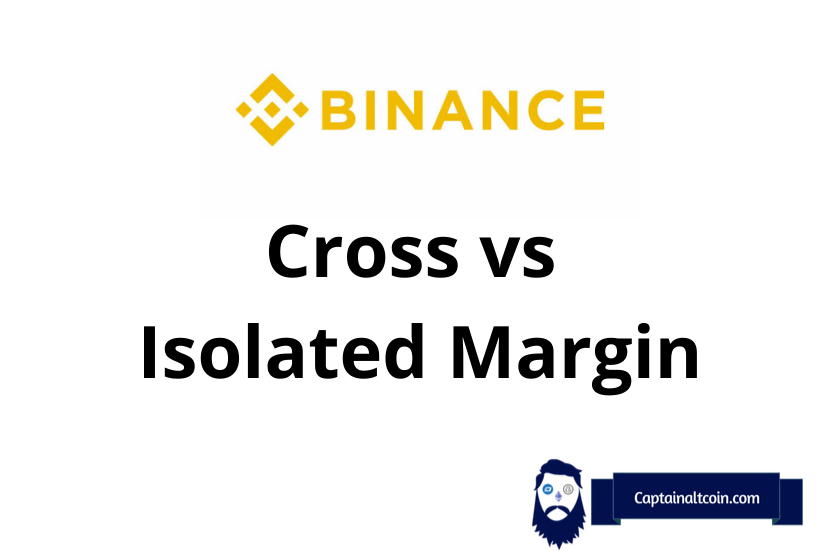
Deciphering the intricacies of margin trading on Binance? You’re not alone. One of the most frequently asked questions by traders revolves around the difference between cross and isolated margin.
While cross margin in Binance utilizes the entire available balance to prevent potential liquidations, isolated margin ensures that a trader’s losses are strictly limited to the initial margin set for each position.
But which mode offers more control? And how do fees differ between the two? Dive into our comprehensive guide to understand the nuances of cross margin vs isolated margin and make informed trading decisions on Binance.
| 🔍 Feature | 🔄 Cross Margin | 🔒 Isolated Margin |
|---|---|---|
| 💼 Usage of Balance | Automatically uses available balance to prevent liquidations. | Losses are limited to the initial margin allocated to each position. |
| ⏳ Position Duration | Positions are held until profitable, even if they seem like losing trades initially. | N/A |
| 🔗 Margin Balance Sharing | Shared across all open positions, reducing liquidation risk. | Each trading pair has an independent margin account. |
| 📉 Margin Level | If it drops below a threshold, position will be liquidated. | Calculated solely in each Isolated Margin Account based on asset and debt. |
| 🎮 Control Over Funds | Gives traders less control, might result in higher losses if market turns against a position. | Traders have more control and can limit losses if market turns against a position. |
| 🛡️ Risk Management | N/A | Risk is isolated in each account, so liquidation of one doesn’t affect others. |
What you'll learn 👉
What is Cross Margin?
In the Cross Margin mode, all the trader’s available balance of the relevant cryptocurrency is automatically used to prevent liquidations on his positions.
What is Isolated Margin?
When a trader uses the Cross Margin mode, his losses are limited to the initial margin he allocated to his position. In case of the margin you assigned drops below the Maintenance Margin Level (the minimum balance needed to prevent that position from getting liquidated), the position is liquidated.
The trader’s risk is isolated in each isolated margin account.
Differences Between Isolated Margin and Cross Margin
Since the cryptocurrency market tends to be one of the most volatile financial markets, positions opened on the isolated margin mode get liquidated quickly during high cryptocurrency price fluctuations, especially when the leverage is high.

However, cross margin positions are held until they get profitable even if they initially seemed to be losing trades.
Another difference between isolated and cross margining is that the isolated margin mode gives traders more control over their funds and limits their losses in case the market turns against an open position.
Binance isolated margin fees
Binance, as one of the biggest crypto exchanges globally, charges a tier-based fee for its users. A user’s trading fee is calculated based on his VIP level. For more details, check out the table below:
Add to that, Binance users need to pay an interest on the cryptocurrencies they borrow every hour. You can find the fees for each digital asset here.
Binance cross margin fees
Cross margin fees are the same as isolated margin fees.
What is Binance Margin Trading and Leveraged Tokens?
LTs (Leveraged tokens) allow traders to gain leveraged exposure to a digital asset without having to worry about the risk of liquidations. Unlike most other LTs, BLVTs (Binance leveraged tokens) don’t maintain consistent leverage and aim for target leverage that varies between 1.5x and 4x.
Some examples of BLVTs include BTCUP and BTCDOWN. BTCUP increases in value when BTC goes up. On the other hand, BTCDOWN’s price increases when BTC goes down. All available BLVTs are accessible under the leveraged tokens tab or exchange-traded fund ETF, which can be found on the spot trading page.
In order to make trading LTs more convenient and profitable, Binance has implemented rebalancing. In fact, BLVTs’ leverage is variable because they increase or decrease their exposure to the underlying asset. For instance, BVLTs take more positions if the relevant cryptocurrency’s price goes up. Conversely, if its price decreases, BLVTs will reduce their positions.
How Does Binance Margin Trading Work?
In a nutshell, margin trading allows traders to amplify their positions using borrowed funds from a third party. Traders need to pass a quiz before being able to margin trade on Binance.
In order to start margin trading on the exchange, users need to watch a video that explains how margin trading works and then take a quiz to make sure that they understand the risks of margin trading.
You’ll need to follow these steps in order to margin trade on Binance:
- Select your preferred margin mode(cross or isolated) from the trading section on the exchange.
- Transfer the collateral you would like to use from your spot wallet to your margin wallet.
- Borrow BTC(or any other available cryptocurrency) automatically by clicking borrow under “buy BTC” tab.
- You can start margin trading with the leverage you have selected. It is quite the same as spot trading. If you want to buy BTC for example, select the price you are willing to pay per Bitcoin, the amount of BTC, etc… You’ll be able to monitor your position status at the bottom of the screen.
- Finally, you can repay the borrowed amount by clicking the “repay” button.

What is Binance margin liquidation?
In case your margin level (Current total exposure / Borrowed amount) drops to 1.1, Binance will repay your loan by closing your position and selling your assets at market price.
What is Binance Cross Margin 3x?
In Binance‘s cross margin mode, the margin balance is shared across all open positions to reduce the risk of liquidations. For instance, let’s say you have 1 BTC and bought 1 BTC for $60k with 3x leverage, so now you have a BTC exposure of $180k.
Let’s say you own 1 ETH and also bought 1 ETH for $4k with 3x leverage, so now you have an ETH exposure of $12k. Now, BTC’s price rises by $1k, and ETH’s price decreases by $100. Let’s calculate your margin level(Current total exposure / Borrowed amount)with cross margin: (183,000+11,700)/(120,000+8,000)=1.52
What is Binance Isolated Margin 10x?
In Binance‘s isolated margin mode, the margin is independent for each position. Let’s calculate the margin level for the positions we saw in the cross margin example: Isolated margin level for BTC: 183,000/120,000=1.52 Isolated margin level for ETH: 11,700/8,000= 1.46
Read also:
- Binance NFT Marketplace Review
- Binance Staking Review
- Binance Earn Review
- How to Trade Binance Options | Binance Option Review
- Binance Tax Calculators
- Best Wallets for Binance Coin (BNB)
- Binance Crypto Debit Card Review
- Binance Alternatives & Competitors
- Binance Options vs Futures
- Binance Grid Trading Review






